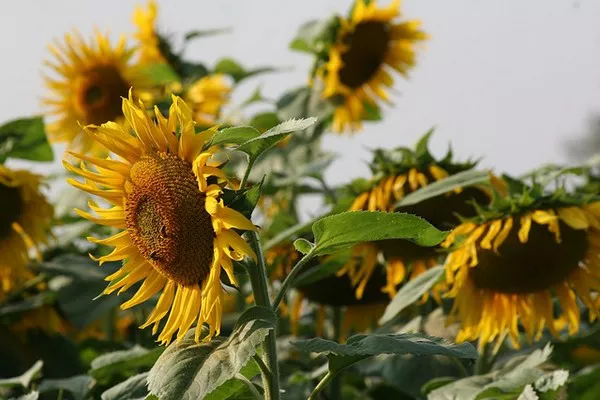As the world becomes increasingly focused on sustainability and environmental conservation, finding innovative ways to utilize agricultural waste has become a critical goal. One such resource with untapped potential is the sunflower stalk. Often overlooked after the harvesting of sunflower seeds, these sturdy and fibrous stems can offer numerous eco-friendly applications across various industries. In this article, we will explore the possibilities of what to do with sunflower stalks, turning them into valuable assets rather than mere waste.
Biomass for Renewable Energy
Sunflower stalks have great potential as a source of biomass for renewable energy production. Biomass refers to organic materials, such as agricultural residues, that can be converted into bioenergy through processes like combustion or anaerobic digestion. Sunflower stalks, being abundant and readily available, can be used as feedstock in biomass power plants or converted into biogas, making them an eco-friendly alternative to fossil fuels.
Incorporating sunflower stalks into the energy mix not only reduces greenhouse gas emissions but also promotes a circular economy, as agricultural waste is utilized to generate power, displacing the need for non-renewable resources.
Animal Feed
Sunflower stalks can serve as nutritious animal feed, benefiting livestock farmers and reducing the pressure on natural resources. These fibrous stems are rich in roughage, making them a suitable component in cattle feed and ruminant diets. Farmers can bale sunflower stalks and store them for winter, offering an eco-friendly and cost-effective option for livestock nutrition.
Moreover, the utilization of sunflower stalks as animal feed reduces the need for other feed sources, potentially mitigating the impact of land-intensive feed crops like soy and corn.
Sustainable Building Materials
The fibrous nature of sunflower stalks presents an exciting opportunity in the construction industry. By processing the stalks into biocomposite materials, such as particleboard or fiberboard, they can be transformed into sustainable alternatives to conventional wood-based products. These biocomposites not only contribute to a reduction in deforestation but also offer better insulation properties and lower carbon footprints.
Architects and builders can explore the incorporation of sunflower stalk-based materials in interior design elements, furniture, and even eco-friendly housing projects, advancing sustainable construction practices.
Soil Conditioning and Mulching
Sunflower stalks, when properly decomposed, can serve as an excellent soil conditioner and mulching material. After shredding or chipping the stalks, they can be used as organic mulch to cover the soil’s surface. Mulching helps retain moisture, suppress weed growth, and protect soil from erosion.
Once the sunflower stalks break down, they enrich the soil with organic matter, enhancing its structure and fertility. This practice is particularly beneficial for farmers practicing organic or regenerative agriculture, as it reduces the reliance on synthetic fertilizers and promotes soil health.
Biochar Production
Biochar is a highly porous, carbon-rich charcoal produced from biomass through a process called pyrolysis. Sunflower stalks, when subjected to this process in a controlled oxygen-free environment, can be converted into biochar.
Biochar has numerous applications, including soil amendment, carbon sequestration, and water filtration. When incorporated into the soil, biochar enhances its ability to retain nutrients and water, contributing to long-term agricultural productivity and climate change mitigation.
Paper and Textile Production
The cellulose content present in sunflower stalks makes them suitable for paper and textile production. By breaking down the stalks into cellulose fibers and processing them, we can create eco-friendly paper and textile products. Utilizing sunflower stalks as a source for these industries can help reduce the demand for wood pulp and synthetic fibers, thus decreasing the pressure on forest ecosystems and fossil fuel-dependent textile manufacturing processes.
Conclusion
The sunflower stalk, once seen as agricultural waste, holds vast potential for contributing to a sustainable and eco-friendly future. By harnessing its versatility in applications ranging from renewable energy and animal feed to construction materials and soil conditioning, we can minimize waste generation and reduce our reliance on environmentally harmful alternatives.
As we continue to explore innovative ways to utilize agricultural byproducts, it is essential to encourage research and investment in the development of technologies that can efficiently process sunflower stalks into valuable resources. By incorporating sunflower stalks into various industries, we take a significant step towards a circular economy, where waste becomes a valuable asset, contributing to a greener and more sustainable world.


